Empowering local villages to plant + protect mangrove ecosystems.
This project has planted 1.53 million mangrove trees across 153 hectares of degraded mangrove forest within the Malindi Watamu National Marine Park and Reserve - a UNESCO Designated Biosphere Area + one of the world’s oldest Marine Protected Areas.
*Thanks to the support of our generous brand partners, this project has been fully funded.
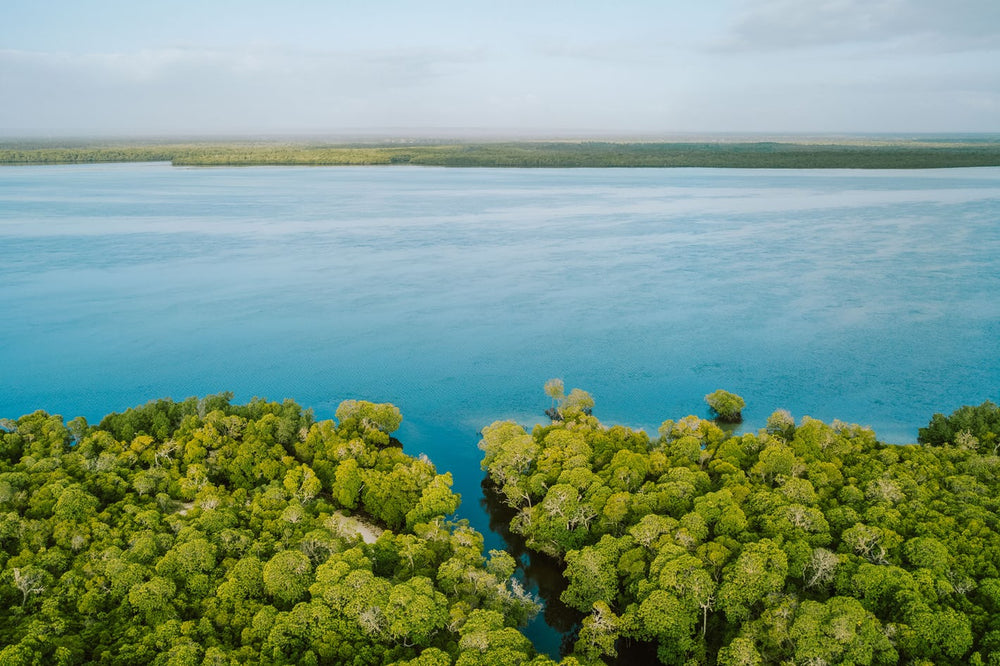
Sandy beaches, mangrove forests + coral reefs.
Mida Creek is a critical stopover for migratory birds. A large portion of Watamu Marine National Park has also been internationally recognized as an Important Marine Mammal Area (IMMA) by the International Union for Conservation of Nature (IUCN). The area is home to critical sea turtle habitat and nesting areas, is used as a nursing ground for Humpback Whales, and has a large resident population of Indo-pacific Bottlenose Dolphin.
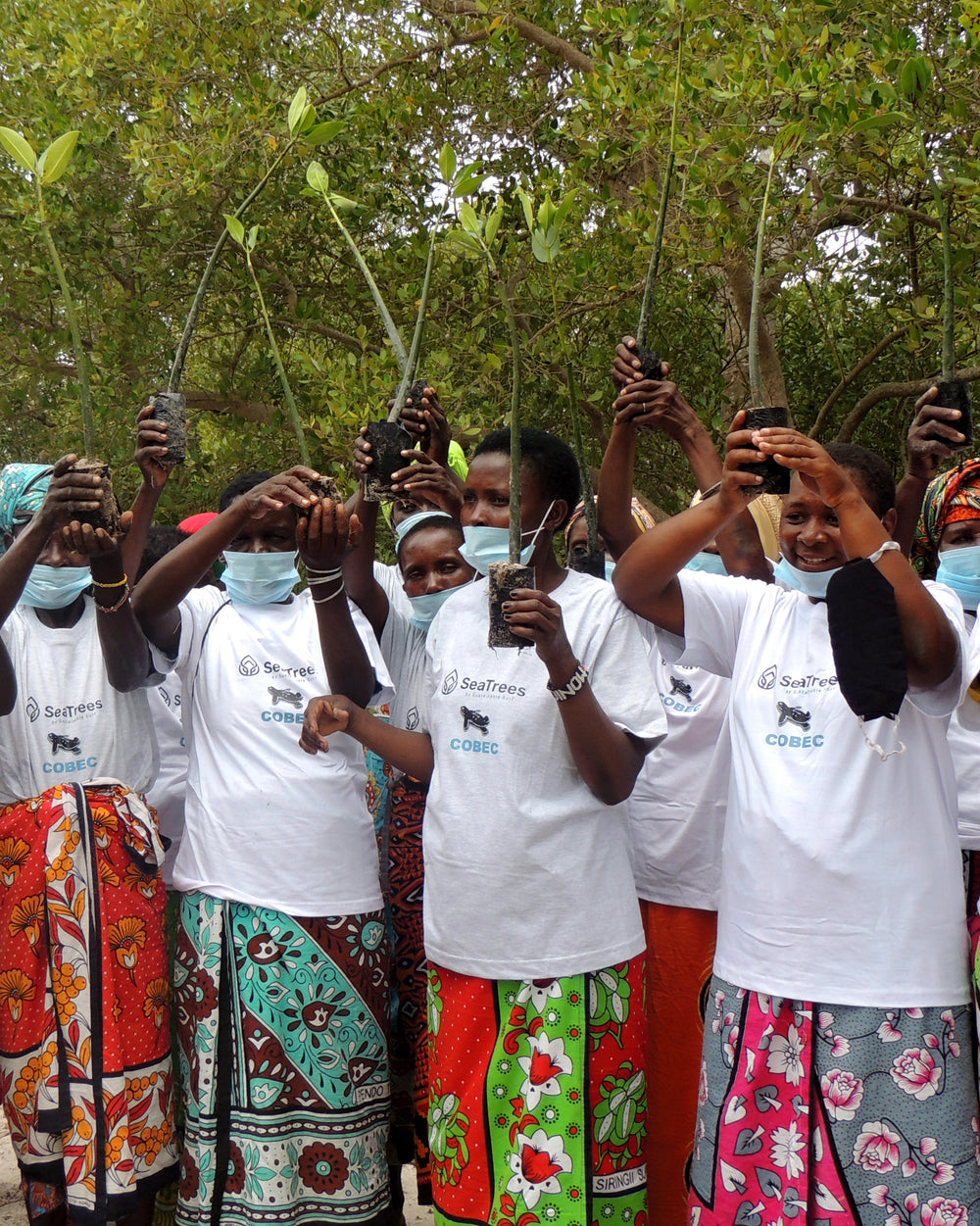
COBEC
SeaTrees has partnered with COBEC (Community Based Environmental Conservation), a community-based organization founded in 2005 in Kenya – focused on local "grass-roots" ocean conservation efforts.
Their main programs implemented with the support of the local communities and government stakeholders have focused on mangrove forest restoration and Sea Turtle conservation.
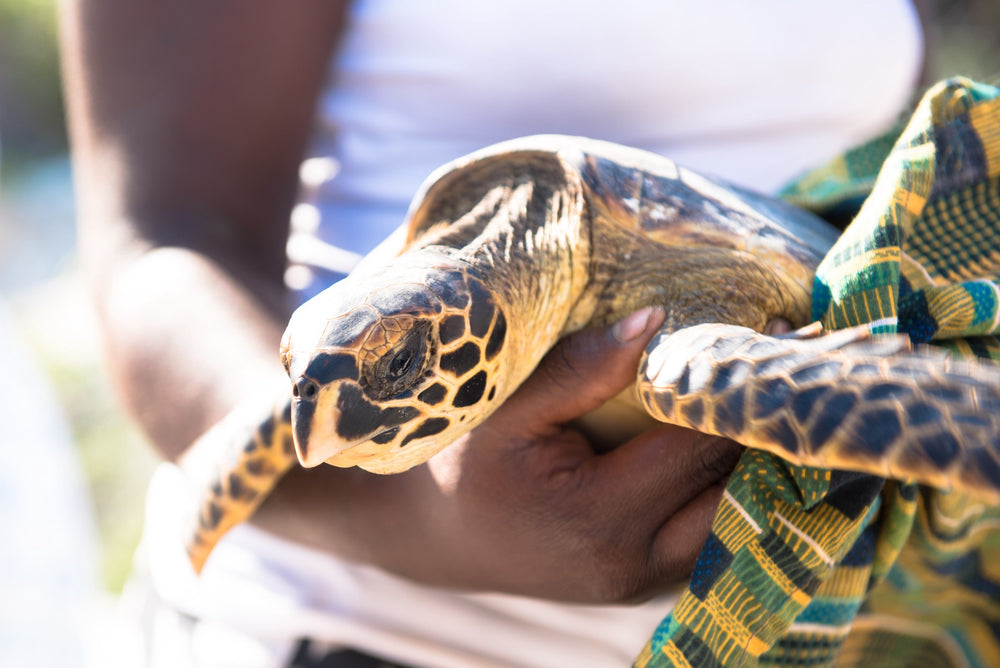
Sea Turtles
Mida Creek is an important feeding and development area for juvenile green and hawksbill sea turtles. Coral heads, mangrove forests and rich seagrass beds provide food in a sheltered area away from large predators.
A little further reading...
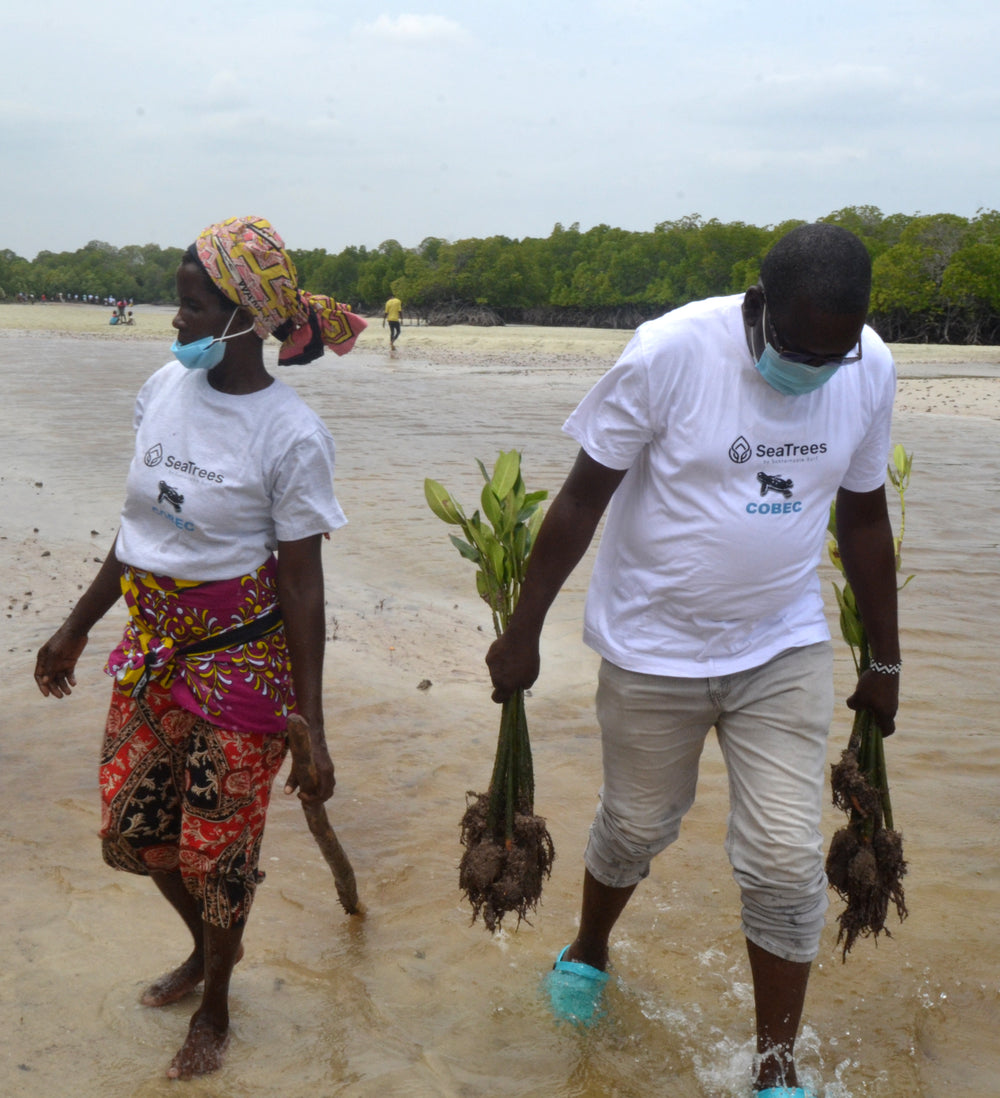
Threatened by deforestation
Mangrove trees have been illegally harvested for lumber and charcoal production, due to local economic pressures.
Working with local communities to provide jobs, the impacted areas are regenerated by planting and protecting native mangroves species – in alignment with the UNEP / Guidelines on MangroveEcosystem Restoration for theWestern Indian Ocean Region.
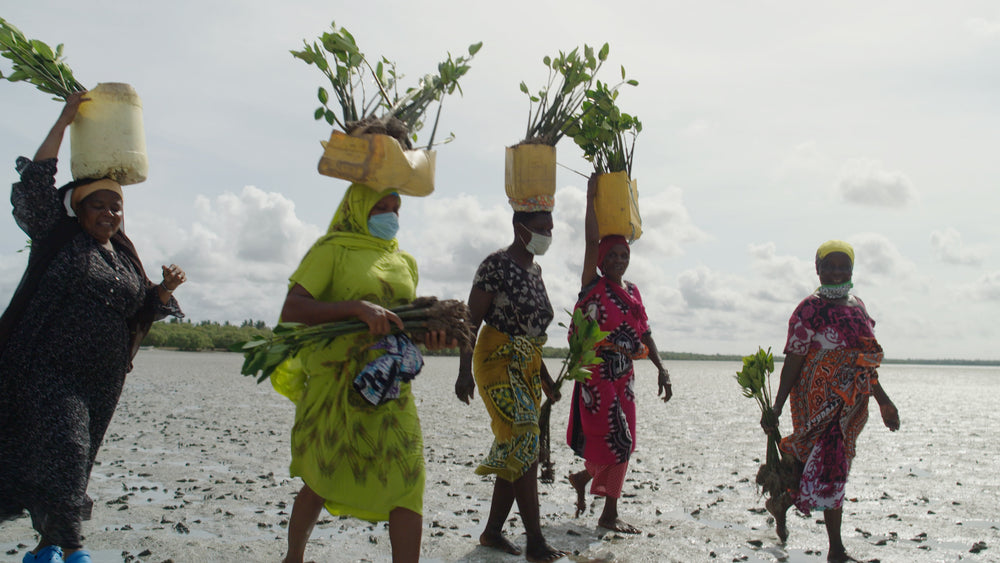
Sustainable Development
This project provides long-term employment for the local community. This in turn drives other Sustainable Development benefits produced by the project.
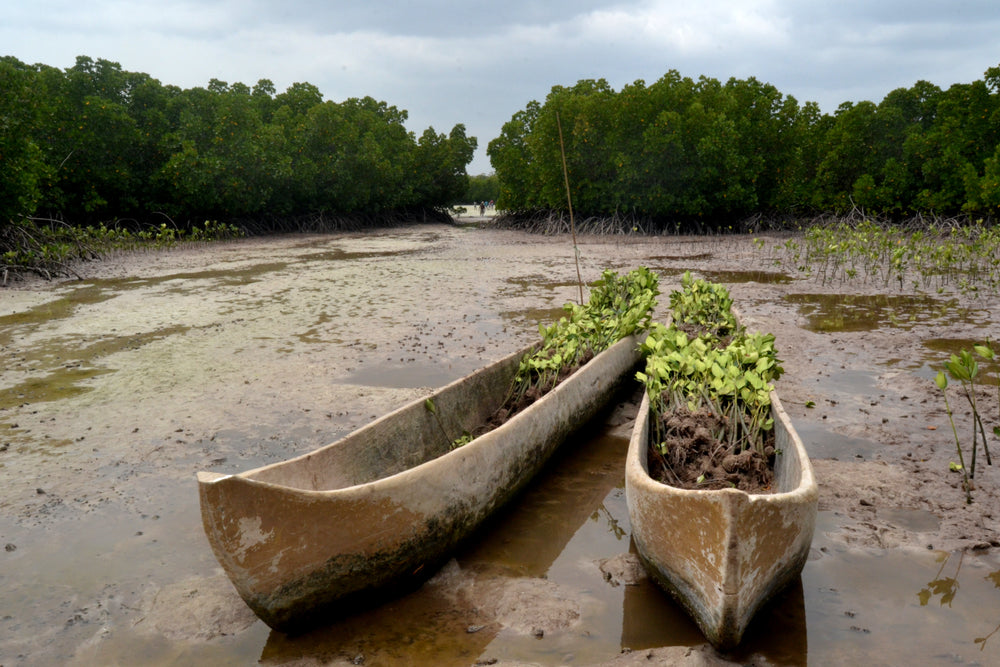
Community-led conservation
COBEC works with local villages to strategically replant mangroves in deforested areas.
More than 350 people are being employed to restore the mangrove forests.
These communities are educated on the environmental and economic importance of these ecosystems, and employed to grow seedlings, collect mangrove propagules, plant mangroves, and monitor the growth of the trees.
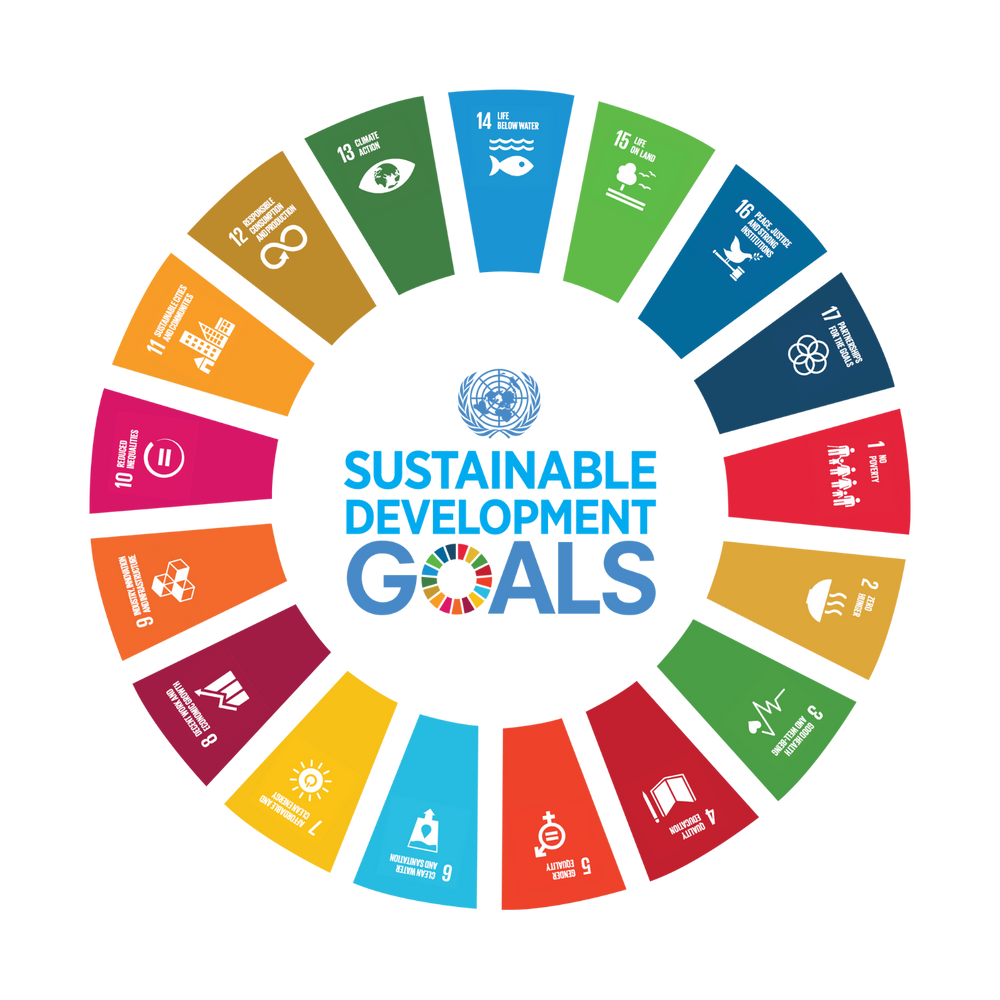
Regenerating Coastal Ecosystems Creates Sustainable Benefits
This project provides economic opportunities for over 350 people in the communities surrounding Mida Creek. In addition to restoring a critical coastal ecosystem, SeaTrees and Community Based Environmental Conservation (COBEC) are creating lasting social impacts for the community members involved. Healthy mangrove ecosystems in Mida Creek ensure that fishing and eco-tourism continue to be viable economic drivers for the region.
Key Impact Metrics
- 200+ jobs created
- 30 mangrove trees will sequester 9 tons of CO2 over the 25-year lifetime of the tree
- 10,000 mangrove trees planted per hectare

No Poverty
While Kenya has the largest economy in east Africa, 36% of its population still live below the international poverty line. This project generates economic opportunities for the communities in the Mida Creek area.
SeaTrees’ project partner in Mida Creek, COBEC, sources the mangrove seedlings and propagules that are used to reforest Mida Creek directly from community-owned and managed nurseries.

Zero Hunger
Before this project, the local community faced diminishing fish resources as a result of mangrove degradation in Mida Creek.
Community members are able to provide meals to their families with wages earned through nursery management. Over time, Mida Creek fish and other seafood resources will build back as the mangrove forests mature.
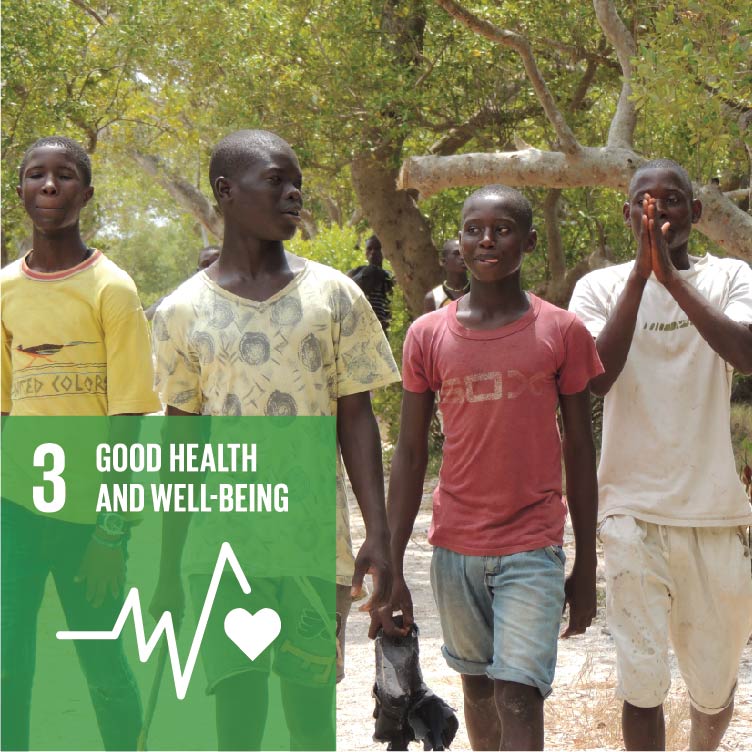
Good Health and Well-being
While some medical care in certain hospitals in Kenya is provided at no cost to patients, there are still several medical expenses that are not affordable for those living at or near the poverty line.
By planting mangrove trees with COBEC, community members have reported using income earned to purchase medications for their households.
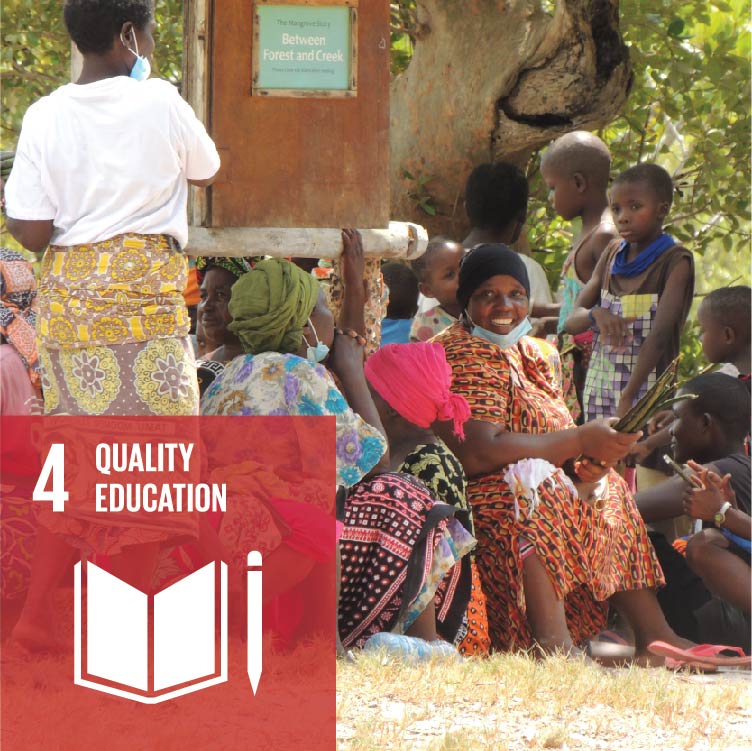
Quality Education
While school fees for Kenyan public schools were abolished in 2003, families still face costs for uniforms, school supplies, and more.
The Mida Creek community members are now able to use money earned through selling mangrove seedlings to pay for children’s school fees.
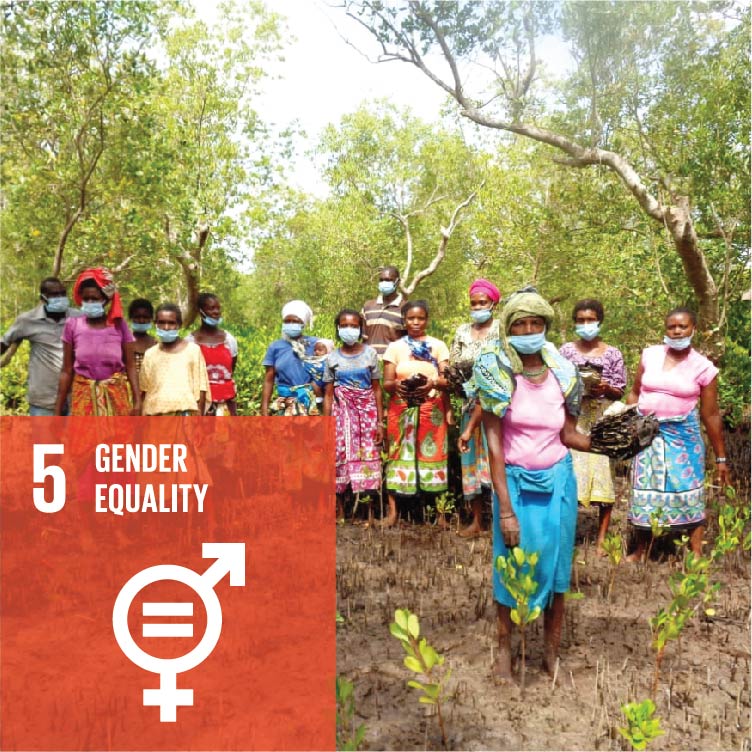
Gender Equality
Women’s involvement in this project has proven to be critical for its success.
Over 50% of the community members who conduct the tree planting and manage the nurseries where saplings are sourced are women.
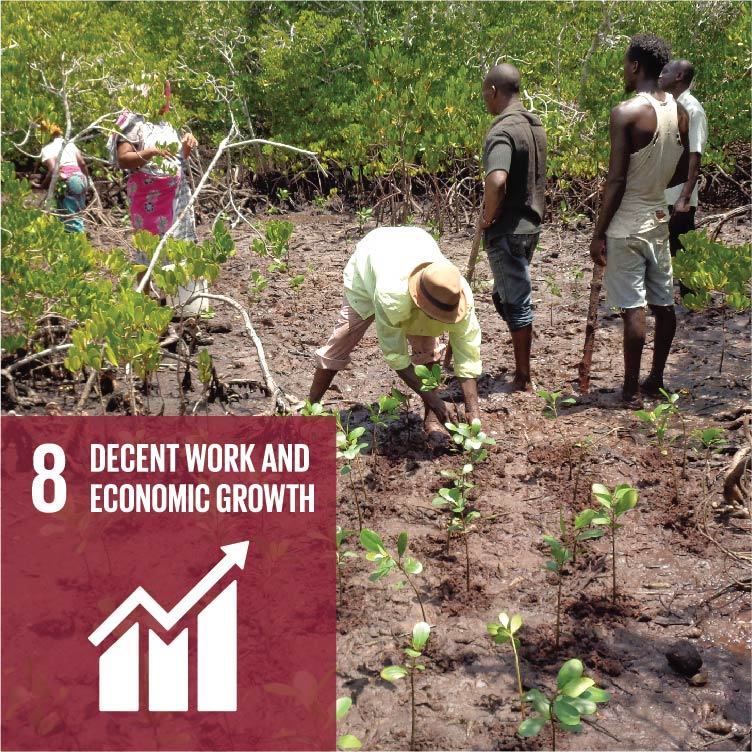
Decent Work and Economic Growth
The degradation of mangrove trees has threatened both economic and food sources for the Mida Creek community. The local community relies heavily on fishing and ecotourism supported by Mida Creek.
Through this project, community members are able to obtain living-wage employment through the nurseries created for tree planting and develop ecotourism micro-enterprises with the wages earned through nursery management.
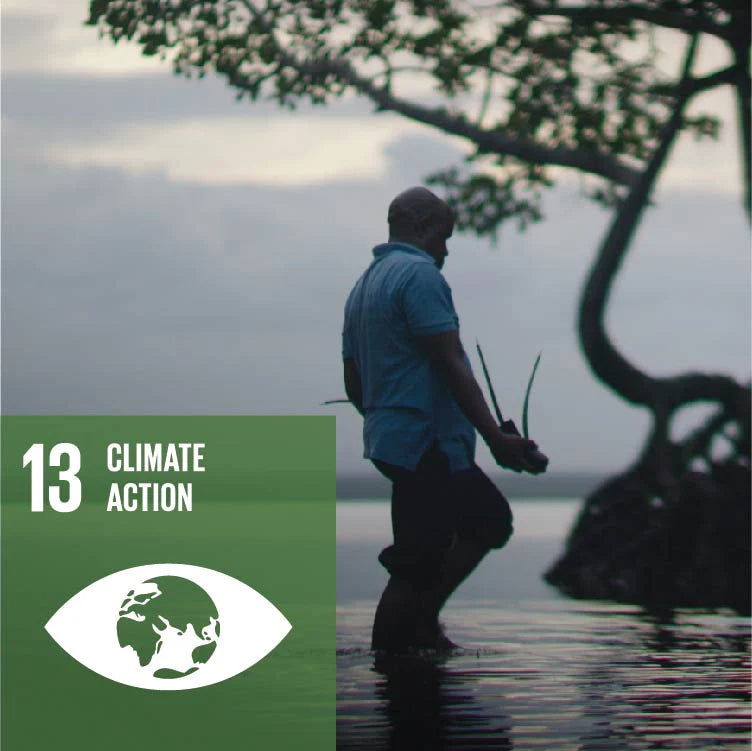
Climate Action
Climate change is a global issue that threatens all societies. SeaTrees’ partner in Mida Creek, COBEC, is mobilizing the Mida Creek community to raise awareness for the project and educating community members on the benefits of mangrove ecosystem conservation.
COBEC hosts community training sessions on the monitoring of mangrove growth and survival to ensure the long-term success of the restoration work.
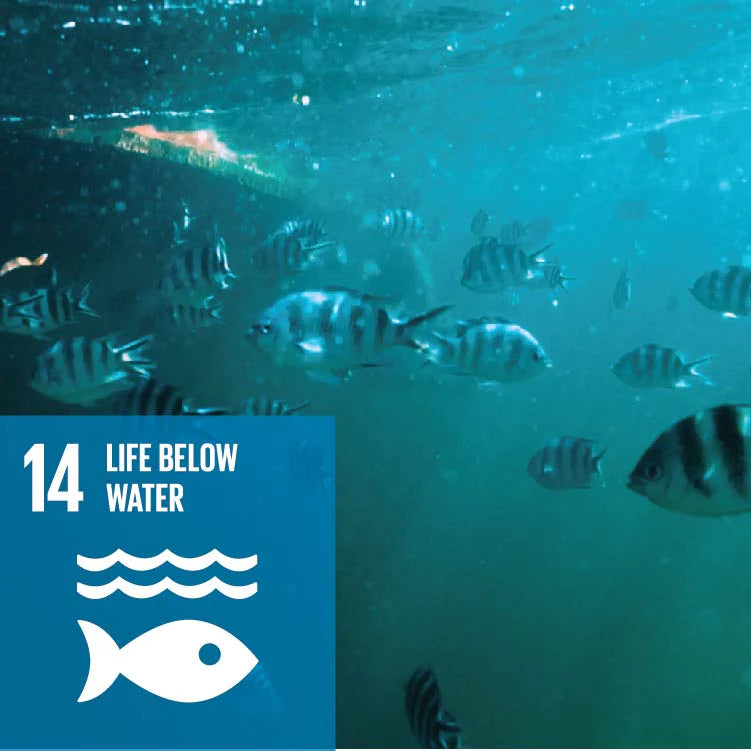
Life Below Water
Mida Creek serves as important breeding grounds for many species of fish including Jacks, Snappers, Groupers, Rabbit Fish, Parrotfish, Emperors, and Barracuda. The area is also home to a variety of aquatic flora including 11 seagrass, 33 seaweed, and 9 mangrove species.
Both seagrass and mangrove trees serve to trap sediments, benefiting local coral reefs and providing an important habitat for many marine species.
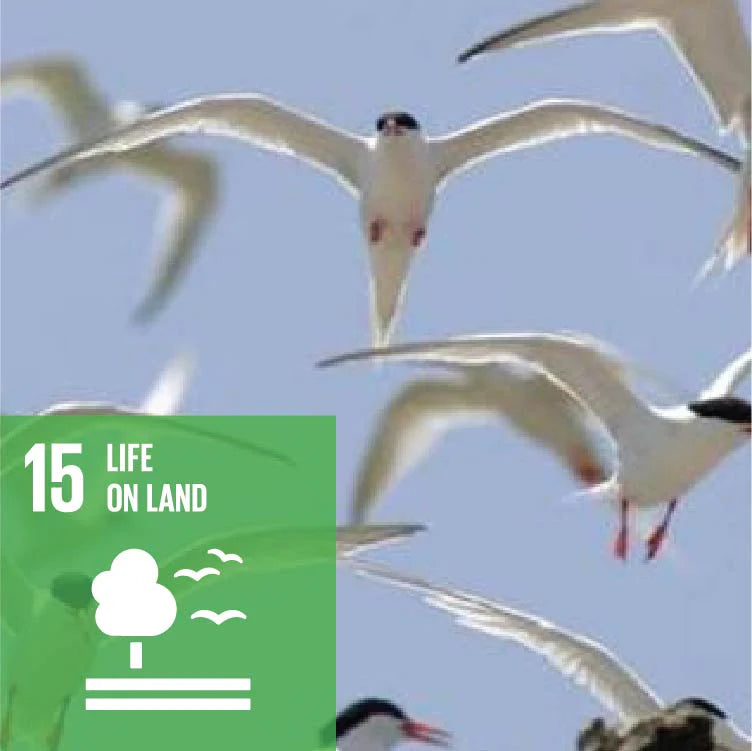
Life on Land
Mida Creek is a recognized International Bird Area and together with Arabuko-Sokoke Forest forms a UNESCO Biosphere Reserve.
The area is home to 65 species of aquatic birds, an important passage and wintering area for Palearctic migrant waders, and a critical feeding and development area for Green sea turtles.


